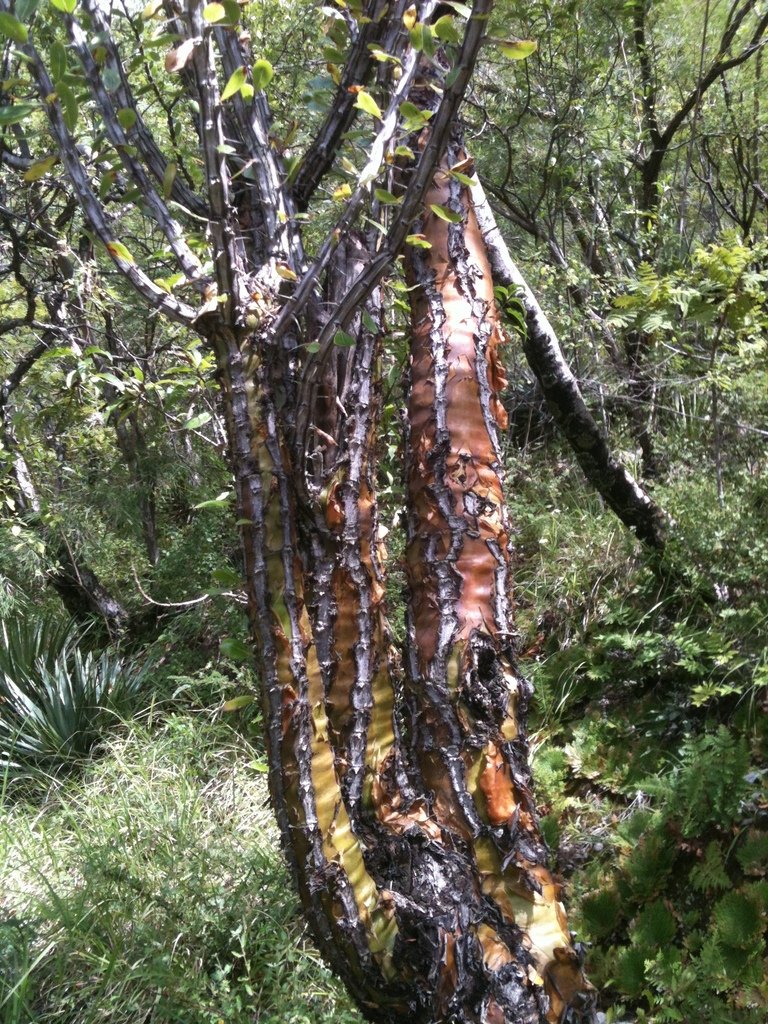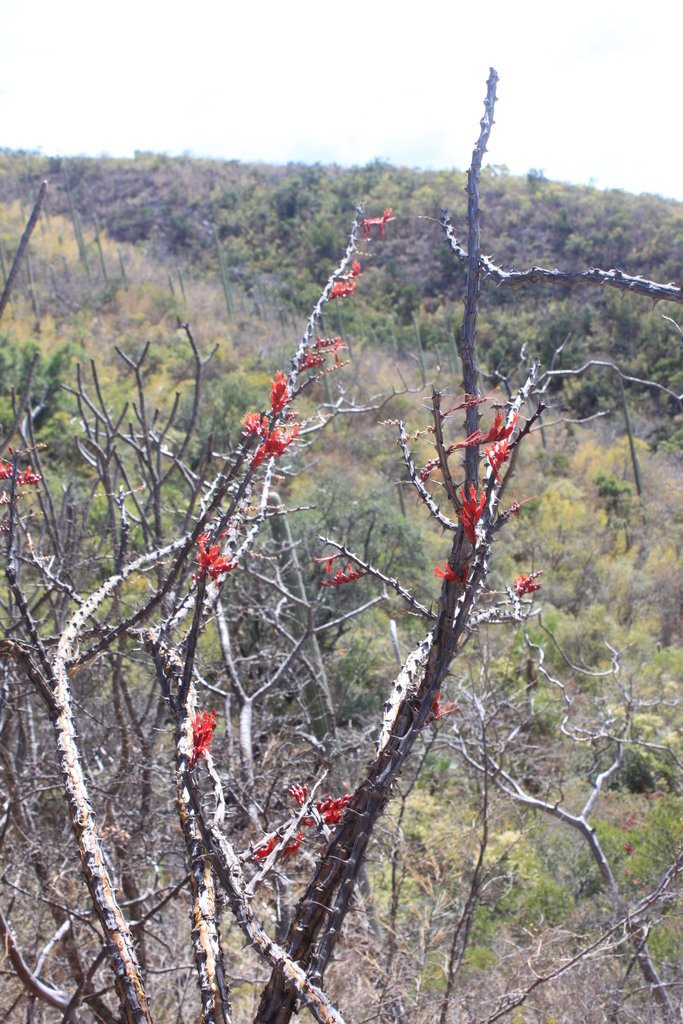Rabo de Iguana
Fouquieria ochoterenae
This fabulous Fouquieria grows into a small, dry deciduous, spiny tree with an ascending crown, small, simple leaves and attractive clusters of red flowers with long stamens, that appear when the tree is leafless. The beautiful bark displays shades from greenish to orange to reddish brown that change with the seasons. This species is very similar to F. leonilae. Their distinguishing characteristics are associated with the longer, more delicate features of F. leonilae as contrasted to thicker, shorter features of stems and flowers of F. ochoterenae.
Plant in full to part sun. Plants are drought tolerant but plants in the ground benefit from watering 2-3 times a month in summer (in containers, 2-3 times a week). In winter, keep on the dry side, but if it doesn’t rain, water them about once a month. Container plants should be lightly watered about once a week in winter. Plants are reported to be hardy to about 20-25°F, but it is advisable to protect them from frost, especially younger plants.
Plants are pollinated by hummingbirds.
Ethnobotanical uses are not well-documented but plants in this genus have been used as medicine almost wherever they occur. Flowers are edible.
The species, ochoterenae, is named after Dr. Isaac Ochoterena (1885–1950), a Mexican autodidact, biologist, botanist, plant collector, researcher, educator and academic who published over 230 scientific works.
Known only from southwestern Puebla and adjacent Oaxaca where it occurs in the deciduous arid tropical scrub vegetation from 4100 to 5000’ in elevation occupying the more arid slores with shallow soil and becomes a dominant species on outcroppings of selenite, fibrous gypsum and limestone.
This species tends to have just a few main trunks and is somewhat upright growing. Photo by Kin Martinez, iNaturalist
The trunk of this species is spectacular and probably lends the common Spanish name "rabo de iguana" which means iguana tail. Photo by Eugenio Padilla, iNaturalist
The flowers occur up and down the plant, and are positioned pretty close to the stem. Photo by Eugenio Padilla, iNaturalist
The flowers are reddish orange and have a tendency to curve toward the stems. Photo by Eugenio Padilla, iNaturalist





